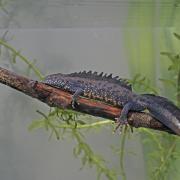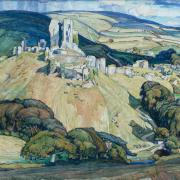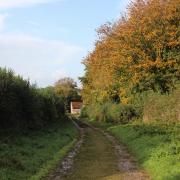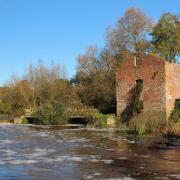Dorset Wildlife Trust has over 40 nature reserves scattered across the county to look after. Each year, a lot of work happens behind the scenes to ensure these wild places are in great condition for wildlife, great and small, to survive and thrive.
Dry heathland scrapes are one of the unsung heroes of conservation work. Many wildlife species rely on bare ground created by soil disturbance thanks to grazing animals and other human interventions on the land. As well as creating these dry heathland scrapes on some of our nature reserves, we also manage livestock for conservation grazing. On Upton Heath near Poole (pictured), we have 10 rare-breed cattle, including British white and Shetland breeds. They graze the sward, trampling as they go, to create open spaces and small scrape habitats. As a result, there is a very healthy smooth snake population on this heath.
On our woodland nature reserves, coppicing helps many species. This practice, carried out for thousands of years, involves cutting trees to ground level in a different, small section of the woodland each winter. This creates different heights and stages of growth in the woodland, which increases ground flora as more light reaches the woodland floor. This creates an ideal nesting space for small mammals such as hazel dormice. Meanwhile, brambles and honeysuckle grow in the dense understory, providing food for these rare mammals.
To learn more about what it takes to manage our nature reserves, and support our new Nature Reserves Fund, visit dorsetwildlifetrust.org.uk/nr-fund

Only found in a few places in the UK, including Dorset, dormice have gingery-brown fur, large, black eyes and a long, fluffy tail (pictured). They are very active at night, climbing high into trees hunting for hazelnuts, berries and insects. The female gives birth to up to seven young in nests created from grass and leaves. In autumn, dormice seek out hibernation spots in logs, leaves at the base of trees, or just beneath the ground where they can stay warmer.

October is the latest that you might see a harebell (Campanula rotundifolia) whilst out walking in Dorset. Look out for their distinctive nodding bell-shaped flowers (pictured) in shades of lilac-blue in hedgerows, sand dunes, cliffs and grassland. Even if its flowers are gone, you can identify this plant by its trailing habit, with small, club-shaped leaves at the base. These dainty blooms are attractive to all sorts of insects, including honeybees and bumblebees, and are a valuable source of nectar.

DWT’s Kingcombe Visitor Centre, has lots of interesting events inspired by the flora and fauna of Autumn. Expert mycologist John Wright leads mushroom forays where you can learn how to identify mushrooms (October 10 & 26/£75pp). Learn how to start a nature journal with our half-day course (10.30am - 2pm) and develop a deeper connection with nature through art (October 18/£40pp). Or, take time to notice woodland details in our mosses and lichens identification course (October 19/£40pp).
Visit dorsetwildlifetrust.org.uk/events to book



























